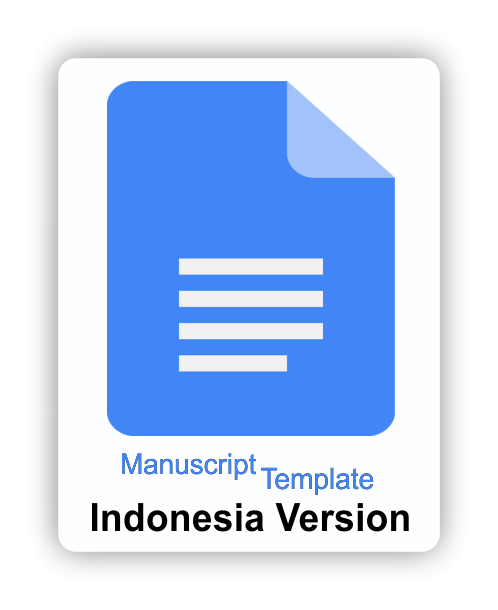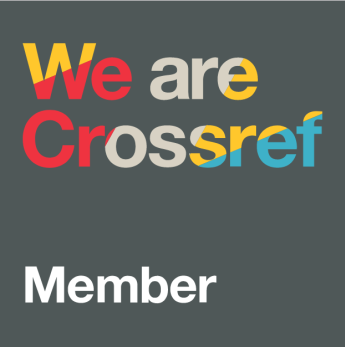Developing an optimal design of the Sekolah Perempuan website to empower women's financial independence
Downloads
Women are often associated with a lack of economic independence, which hinders their ability to make autonomous financial decisions. The development of the Sekolah Perempuan website aims to address the significant challenge of women's financial independence, exacerbated by limited access to education and persistent social stigma. This study focuses on creating an optimal design framework that empowers women through the effective use of digital resources. By employing a mixed-methods approach, including both quantitative and qualitative methods, the research utilizes the ADDIE model to guide the website's development. A sample of 35 women participants was surveyed to assess their financial independence before and after engaging with the Sekolah Perempuan website. The data collection instruments included structured surveys, which revealed a significant improvement in financial autonomy, indicated by a mean difference (p < 0.001). The design framework consists of three key components: (1) Promoting Women Empowerment through educational initiatives that enhance self-confidence, financial literacy, and digital skills; (2) Enhancing Digital Marketing Skills by developing competencies in digital knowledge and marketing strategies; and (3) Supporting Financial Independence through integrated marketing tools and educational resources. The findings demonstrate a positive impact, with participants reporting new income sources and increased financial confidence. This study underscores the potential of digital platforms to foster women's financial independence and offers sustainable solutions for long-term empowerment. Future research should explore the application of this framework across various digital platforms to further enhance women's empowerment initiatives.
Alper, K. (2019). Income, familialism, and women's economic independence. LIS Working Paper Series, No. 766. Luxembourg Income Study. https://hdl.handle.net/10419/203052
Aslam, A., Abidi, S. N. M., & Rizvi, S. S. A. (2024). Digital literacy and women's empowerment: Bridging the gender gap in technology for achieving sustainable development goals (SDGs). Pakistan Journal of Gender Studies, 24(2), 93-106. https://socialsciencejournals.pjgs-ws.com/index.php/PJGS/article/view/793
Boman, K., & Raijonkari, K. (2017). Online video as a marketing tool: A quantitative survey on video marketing habits (Bachelor’s thesis). JAMK University of Applied Sciences. https://www.theseus.fi/bitstream/handle/10024/127852/Boman_Kalle_%20Raijonkari_Kalle.pdf?sequence=1
Daniels, C., Russell, S., & Ens, E. (2022). Empowering young aboriginal women to care for country: Case study of the Ngukurr Yangbala rangers, remote northern Australia. Ecological Management & Restoration, 23(S1), 53-63. https://doi.org/10.1111/emr.12538
Day, G. S. (1981). Strategic market analysis and definition: An integrated approach. Strategic Management Journal, 2(3), 281-299. https://doi.org/10.1002/smj.4250020306
Dhamayanti, M., Susilawati, E., Mavianti, J., Pujiastuti, N., & Karo, M. B. (2022). Empowerment of mompreneurs in creating economic independence. Proceedings of the International Conference on Social, Economics, Business, and Education (ICSEBE 2021), 205, (pp. 51-52). https://doi.org/10.2991/aebmr.k.220107.011
Diachkova, A., & Kontoboitseva, A. (2022). Economic benefits of gender equality: Comparing EU and BRICS countries. Economic Consultant, 37(1), 4-15. https://doi.org/10.46224/ecoc.2022.1.1
Dilawar, F., Hussain, I., & Tahira, R. (2024). Role of digital skills as strategy for women empowerment. Voyage Journal of Educational Studies, 4(2), 448-461. https://doi.org/10.58622/vjes.v4i2.204
Dominique-Ferreira, S., Viana, M., & Prentice, C. (2021, June). Developing a digital platform based on a design and marketing approach. In 2021 16th Iberian Conference on Information Systems and Technologies (CISTI) (pp. 1-6). IEEE. https://doi.org/10.23919/CISTI52073.2021.9476363
Frecheville-Faucon, R. (2023). "Defamilializing" how women’s economic independence is measured. Bureau d’Économie Théorique et Appliquée (BETA) Working Paper No. 2023-27. https://beta.economics.fr
Han, X. (2020). Women’s empowerment in digital media: A communication paradigm. In J. Servaes (Ed.), Handbook of communication for development and social change (pp. 1-12). Springer. https://doi.org/10.1007/978-981-15-2014-3_79
Hirani, F., Arif, S., Nathwani, A. A., Peerwani, G., Kalbarczyk, A., Sultana, S., Kazi, A. M., Yousuf, F., Lefevre, A. E., Bhutta, S., Winch, P. J., Soof, S., Bhutta, Z. A., Zaidi, A. K. M., & Mir, F. (2025). Patterns of care-seeking for postpartum symptoms in urban Karachi, Pakistan: Implications for intervention design. Reprod Health, 22(55), 1-11. https://doi.org/10.1186/s12978-025-01981-8
Huber, E., Stephens, J. D., Bradley, D., Moller, S., & Nielsen, F. (2009). The politics of women’s economic independence. Social Politics, 16(1), 1–39. https://doi.org/10.1093/sp/jxp005
IBCSD. (2024). Unlocking potential: Empowering women entrepreneurs in Indonesia with Krealogi. Indonesia Business Council for Sustainable Development. https://ibcsd.or.id/news-insights/member-update/unlocking-potential-empowering-women-entrepreneurs-in-indonesia-with-krealogi/
Ilomäki, L., Kantosalo, A., & Lakkala, M. (2011). What is digital competence? In Linked portal. European Schoolnet. 1-12. http://linked.eun.org/web/guest/in-depth3
Jahanbakhsh, S., Jomehri, F., & Mujembari, A. K. (2015). The comparison of women's self-confidence based on gender role. Procedia-Social and Behavioral Sciences, 191, 2285-2290. https://doi.org/10.1016/j.sbspro.2015.04.573
Jayashree, C. (2023). Women empowerment for sustainable development. Quing International Journal of Commerce and Management, 3(3), 376-383. https://doi.org/10.54368/qijcm.3.3.0017
Khan, S., Bhat, M., & Sangmi, M. (2022). Can microfinance-backed entrepreneurship be a holistic empowerment tool for women? Empirical evidence from Kashmir Valley, India. Journal of Business and Socio-Economic Development, 2(2), 117-136. https://doi.org/10.1108/jbsed-07-2021-0097
Khanal, S. (2023). Gender equality in sustainable development goals: Some reflections from Nepal. Journey for Sustainable Development and Peace Journal, 1(02), 147-161. https://doi.org/10.3126/jsdpj.v1i02.58267
Kirkwood, J. (2009). Is a lack of self‐confidence hindering women entrepreneurs? International Journal of Gender and Entrepreneurship, 1(2), 118-133. https://doi.org/10.1108/17566260910969670
Kitchen, P. J., & Burgmann, I. (2010). Integrated marketing communication. In J. Sheth & N. Malhotra (Eds.), Wiley International Encyclopedia of Marketing. Wiley. https://doi.org/10.1002/9781444316568.wiem04001
Lenney, E. (1977). Women's self-confidence in achievement settings. Psychological Bulletin, 84(1), 1-13. https://doi.org/10.1037/0033-2909.84.1.1
Lusardi, A., & Mitchell, O. S. (2008). Planning and financial literacy: How do women fare? American Economic Review, 98(2), 413-417. https://doi.org/10.1257/aer.98.2.413
Mishra, A. D. (2014). Women empowerment: Issues and challenges. Indian Journal of Public Administration, 60(3), 395-410. https://doi.org/10.1177/0019556120140302
Moghadam, V. M., & Senftova, L. (2005). Measuring women’s empowerment: Participation and rights in civil, political, social, economic, and cultural domains. International Social Science Journal, 57(184), 389-412. https://doi.org/10.1111/j.1468-2451.2005.00557.x
Nurhayati, N., Jakaria, J., & Aina Zahra Parinduri. (2023). Training on enhancing women’s role in supporting household economy. International Journal of Community Service Implementation, 1(2). 21-28. https://doi.org/10.55227/ijcsi.v1i2.162
Ngulube, L., Thelma, C., Gilbert, M., Sylvester, C., Mpolomoka, D., & Mulenga, D. (2024). Gender equality and economic growth: A case of Lusaka District, Zambia. Asian Journal of Education and Social Studies, 50(7), 181-196. https://doi.org/10.9734/ajess/2024/v50i71455
Norman, D. A., & Draper, S. W. (1986). User centered system design: New perspectives on human-computer interaction. L. Erlbaum Associates Inc.
OECD. (2022). Gender equality and the empowerment of women and girls: DAC guidance for development partners. OECD Publishing. https://doi.org/10.1787/0bddfa8f-en
Pandey, S. (2024). A critical examination of women's economic independence. Shodh Sagar: International Journal for Research Publication and Seminar, 15(2), 19-20. https://doi.org/10.36676/jrps.v15.i2.04
Pea, R. D. (1987). User centered system design: New perspectives on human-computer interaction. Journal of Educational Computing Research, 3(1), 129-134. https://telearn.hal.science/hal-00190545/
Pöhn, D., & Hommel, W. (2024). Digital skills and technology to empower women. In Sustainable Development Goals (pp. 79-94). CRC Press. https://theaseanmagazine.asean.org/article/empowering-women-through-digital-technology/
Potrich, A. C. G., Vieira, K. M., & Kirch, G. (2018). How well do women do when it comes to financial literacy? Proposition of an indicator and analysis of gender differences. Journal of Behavioral and Experimental Finance, 17, 28-41. https://doi.org/10.1016/j.jbef.2017.12.005
Rohmatilah, D. (2023). The role of gender equality on poverty alleviation: Case of Indonesia. Jurnal Perencanaan Pembangunan the Indonesian Journal of Development Planning, 7(2), 272-287. https://doi.org/10.36574/jpp.v7i2.450
Samuda, S. (2023). Low equality for women, slower economic growth for all? Evidence from d-8 countries. Muslim Business and Economic Review, 2(2), 191-206. https://doi.org/10.56529/mber.v2i2.191
Sánchez-Canut, S., Usart-Rodríguez, M., Grimalt-Álvaro, C., Martínez-Requejo, S., & Lores-Gómez, B. (2023). Professional digital competence: Definition, frameworks, measurement, and gender differences: A systematic literature review. Human Behavior and Emerging Technologies, 2023(1), 1-22. https://doi.org/10.1155/2023/8897227
Sanze, N., Bamfo, B. A., & Takyi, L. N. (2024). Intervention programs and women empowerment: The role of skills acquisition and development and financial independence. Journal of Enterprising Communities: People and Places in the Global Economy, 18(6), 1296-1312. https://doi.org/10.1108/JEC-03-2024-0038
Sedej, T. (2019). The role of video marketing in the modern business environment: A view of top management of SMEs. Journal for International Business and Entrepreneurship Development, 12(1), 37-48. https://doi.org/10.1504/JIBED.2019.103388
Shetty, S., & Hans, V. B. (2015). Role of education in women empowerment and development: Issues and impact. Retrieved from https://ssrn.com/abstract=2665898
Shivakumar, S. K., & Sethii, S. (2019). Building digital experience platforms. Apress. https://doi.org/10.1007/978-1-4842-4303-9
Shoukat, A., Abdullah, M., Qamri, G. M., & Ghauri, T. A. (2023). Breaking barriers, building bridges: Economic freedom and women's empowerment. IRASD Journal of Economics, 5(2), 377–391. https://doi.org/10.52131/joe.2023.0502.0134
Suarmita, S., Suarman, S., & Gusnardi, G. (2025). Development of multimedia-based interactive module teaching materials to increase learning independence. Journal of Education and Learning Research, 2(2), 141-151. https://doi.org/10.62208/jelr.2.2.p.141-151
Sujan, N. (2016). Financial independence: A must for women empowerment. International Education and Research Journal, 2(3), 42-43. https://www.academia.edu/download/52831287/17-Naisha_Sujan.pdf
Sundarasen, S., Rajagopalan, U., Kanapathy, M., & Kamaludin, K. (2023). Women's financial literacy: A bibliometric study on current research and future directions. Heliyon, 9(12), 1-17. https://doi.org/10.1016/j.heliyon.2023.e21379
Tawab, N. (2024). Digital platforms address women's empowerment issues and their relationship to the level of contact presence of its users. Scientific Journal of Research on Women, Media, and Society Studies, 2(1), 338-363. https://doi.org/10.21608/jwms.2024.290260.1011
Thomas, A. (2024). The role of women’s entrepreneurship in achieving sustainable development goals (SDGs): A comprehensive review. Journal of Biotechnology & Bioinformatics Research, 6(2), 1-11. https://doi.org/10.47363/JBBR/2024(6)174
UNCTAD. (2022). Harnessing digital technologies for inclusive development. United Nations Conference on Trade and Development. https://unctad.org/publication/harnessing-rapid-technological-change-inclusive-and-sustainable-development
UN Women. (2020). Women and the COVID-19 crisis: The need for gender-responsive policies. https://www.unwomen.org/en/news/in-focus/in-focus-gender-equality-in-covid-19-response
Varey, R. J. (2002). Marketing communication: Principles and practice. Psychology Press.
Wilson, R. M. (2010). Strategic marketing planning. Routledge.
Wrenn, B., & Mansfield, P. M. (2014). Marketing planning guide. Routledge.
World Bank. (2019). Profiting from parity: Unlocking the potential of women’s businesses in Africa. https://openknowledge.worldbank.org/entities/publication/f4e8211e-7ce2-5115-8a05-2bbbac3fbaf0
World Economic Forum. (2021). Global gender gap report 2021. https://www.weforum.org/publications/global-gender-gap-report-2021/
Xu, X. S., Yan, X., & Zheng, X. (2008). Communication platforms in electronic commerce: A three‐dimension analysis. info, 10(2), 47-56. https://doi.org/10.1108/14636690810862802
Yuliatiningtyas, S., Putrian, S. A., & Ramadiansyah, T. A. (2024). Empowerment of digital marketing and women's role in rural economic development: A case study in Nglinggi Village, Klaten, Central Java, Indonesia. Golden Ratio of Marketing and Applied Psychology of Business, 4(2), 101–108. https://doi.org/10.52970/grmapb.v4i2.432
Copyright (c) 2025 Fauzi Kurniawan, Muhammad Takwin Machmud, Melly Bangun, Sudirman Sudirman, Anifah Anifah, Omthajit Pansri

This work is licensed under a Creative Commons Attribution-ShareAlike 4.0 International License.
The journal allows the author(s) to hold the copyright without restrictions. Finally, the journal allows the author(s) to retain publishing rights without restrictions
 | Jurnal Inovasi Teknologi Pendidikan by http://journal.uny.ac.id/index.php/jitp is licensed under a Creative Commons Attribution-ShareAlike 4.0 International License. |























